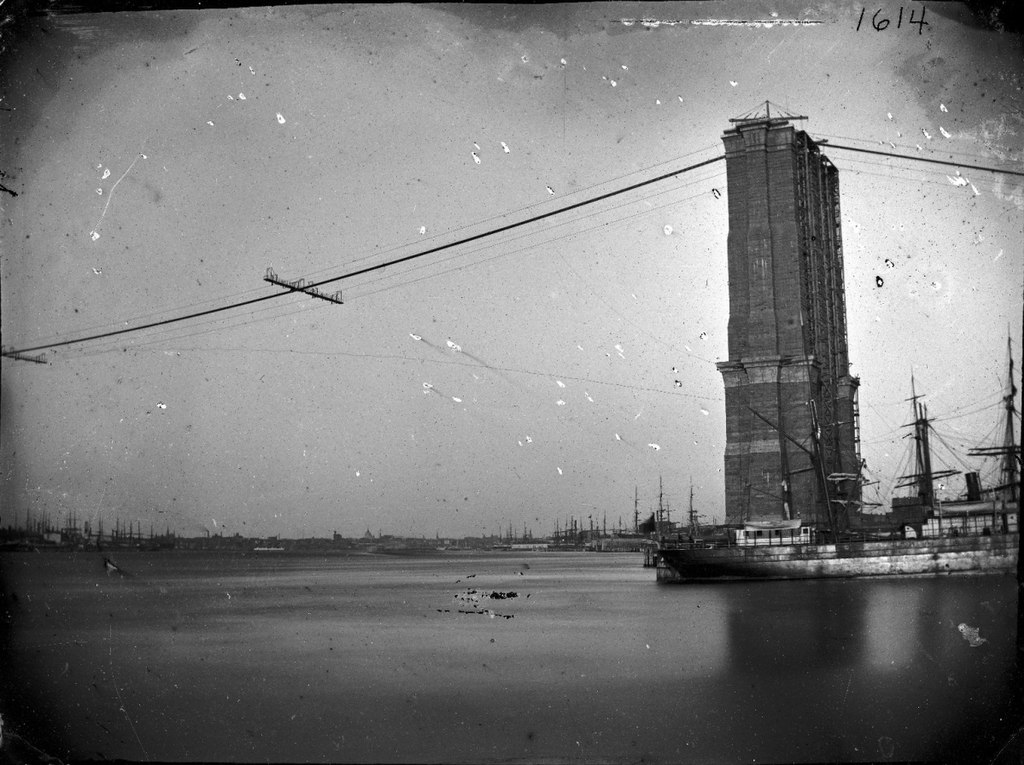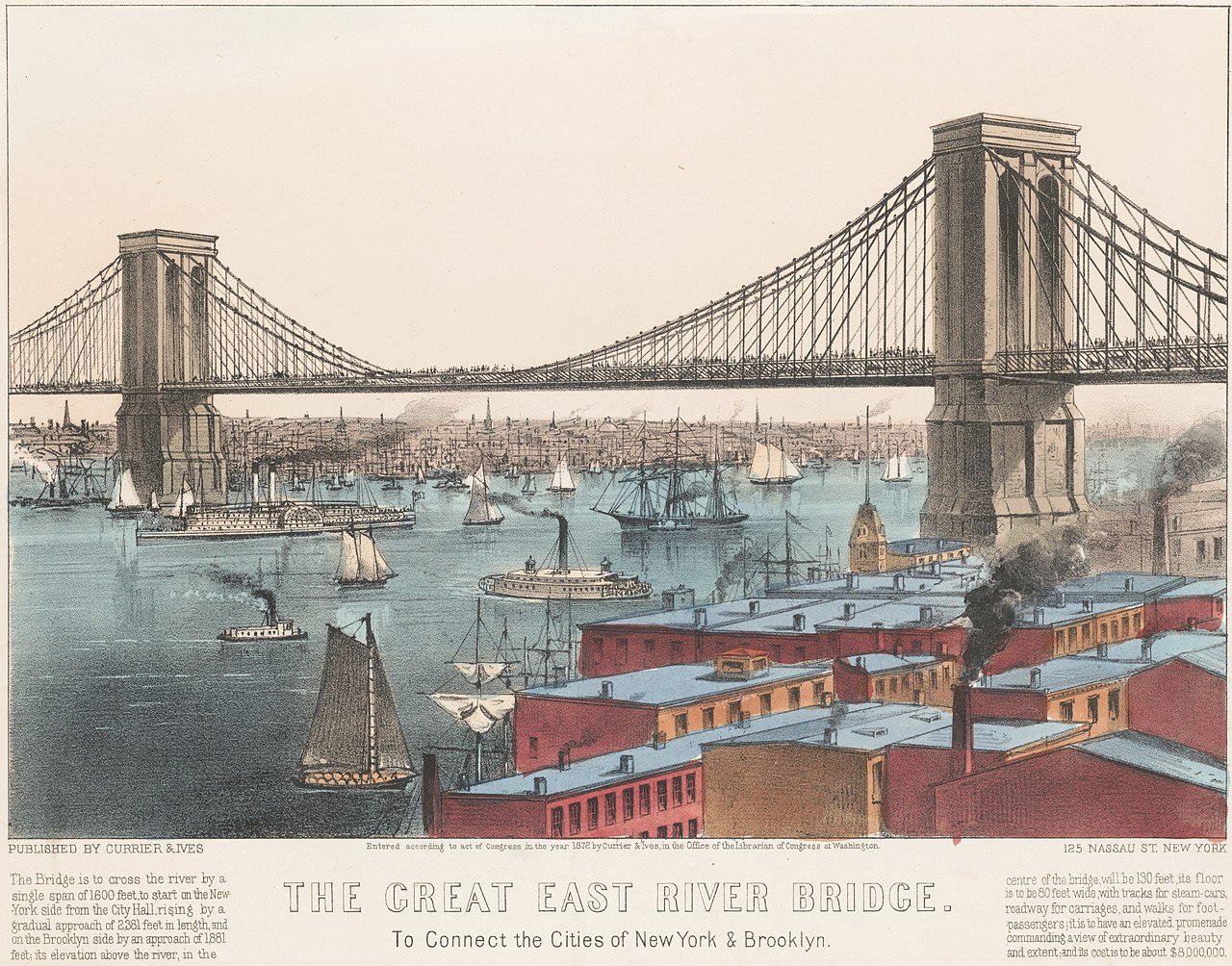Authors:
Historic Era:
Historic Theme:
Subject:
October 1956 | Volume 7, Issue 6


Authors:
Historic Era:
Historic Theme:
Subject:
October 1956 | Volume 7, Issue 6

People living in Brooklyn in the 1870’s were able to boast that their home town was the third largest, fastest growing city in the United States, but they had one major daily headache—getting to work in New York. For, they were dependent upon the terries; and the ferries, delightful though they could be, were in turn dependent upon the weather, fee, log, and wind played merry hob with their schedules, and exasperated commuters talked longingly of the time when completion of the Fast River Bridge would bring their troubles to an end.
Throughout the sixteen years from its conception in 1867 to its completion in 1883 the bridge was a favorite source of argument, for it was opposed by many persons on both sides of the river. Probably all our huge modern bridges and tunnels combined have not aroused a quarter of the interest which attended this one lone span’s construction. In part this was because a long suspension bridge—endangering the ferries’ entrenched interests—was a revolutionary project in those days, but in part too it was because of the dramatic saga of the Roeblings, the father and son who designed and built the bridge, and in doing so sacrificed the life of one and the health of the other.
John Roebling’s interest in this formidable project began long before 1867, when his plans for connecting New York with Long Island at last were approved by the legislature and he was commissioned to execute them. As America’s most illustrious bridge builder, with great spans at Niagara Falls, Pittsburgh, Cincinnati, and elsewhere to his credit, he had been intrigued for years by the challenge which the East River presented. Back in 1857 he had submitted a plan for a suspension bridge between New York and Brooklyn, inspired perhaps by his memories of a harrowing occasion in 1852 when he had been marooned for hours on a ferryboat in an East River ice jam.
One of the chief reasons for the opposition to the building of a bridge was that New York looked upon its harbor as its greatest asset, and it was unthinkable that any part of that harbor should be blocked by bridge piers or that a great ship’s altitude should be limited by an overhead roadway. The obvious solution to this problem was a high suspension bridge, but it was not without reason that people were afraid of suspension bridges, for the comparatively short history of such spans was all too liberally sprinkled with disaster. These doomed structures were all the work of other engineers, however; not a single one of John Roebline’s